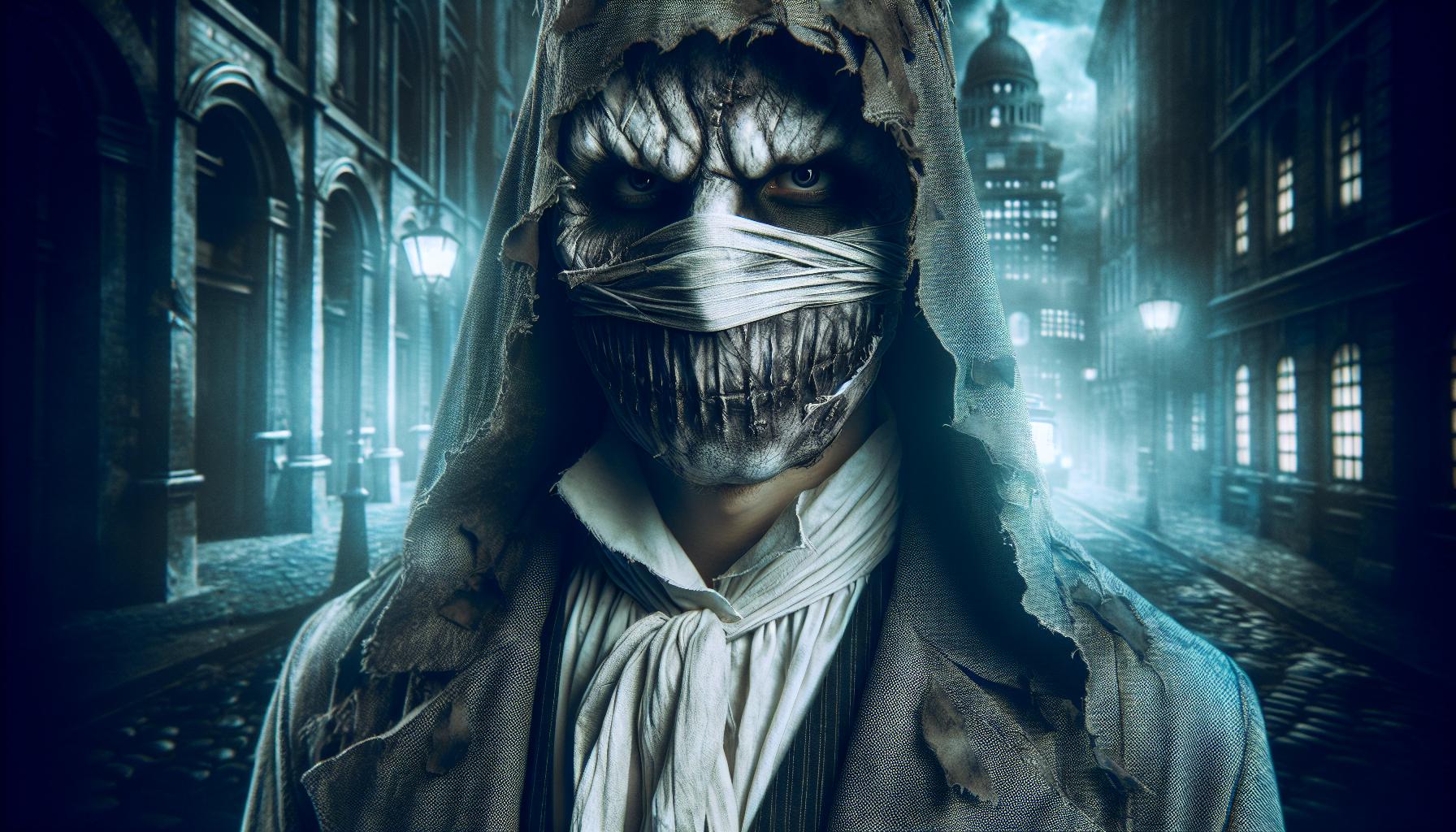When I think of iconic portrayals in the Batman universe, Cillian Murphy’s performance as the Scarecrow stands out. His ability to blend menace with a haunting vulnerability adds layers to a character often overshadowed by more prominent villains. With his striking presence and intense gaze, Murphy transformed the Scarecrow into a memorable figure in Christopher Nolan’s trilogy.
As I dive into the nuances of Murphy’s role, I can’t help but appreciate how he brought a unique depth to the character. His portrayal not only challenged Batman but also explored the psychological complexities of fear itself. Join me as I unravel the fascinating elements of Cillian Murphy’s contribution to the Batman saga and what makes his performance unforgettable.
Key Takeaways
- Cillian Murphy’s portrayal of Scarecrow in “Batman: U0XHO51PLU4=” adds emotional depth and complexity, transforming him into a memorable villain in the Batman saga.
- The character’s duality as a psychiatrist highlights the psychological manipulation and trauma that defines both Scarecrow and Batman, enriching the overall narrative.
- The film explores the transformative power of fear, showcasing how it can both empower and destroy characters, illustrating their internal struggles.
- Cinematic elements, including direction by Christopher Nolan and a haunting score by Hans Zimmer, enhance the film’s atmosphere, reinforcing the themes of fear and psychological tension.
- Visual aesthetics, such as shadows and lighting, symbolize the pervasive darkness of Gotham City, amplifying the emotional impact of Murphy’s performance.
- The thematic exploration of fear prompts audiences to reflect on their own experiences with fear and the moral complexities surrounding it.
Batman:u0xho51plu4= Cillian Murphy
Batman:u0xho51plu4= cillian murphy represents a significant entry in the Batman franchise. This title encompasses a unique narrative that explores the depths of Gotham City and its inhabitants. Central to this adaptation are the psychological battles each character faces, particularly the complex villainy exhibited by Scarecrow, played by Cillian Murphy.
Cillian Murphy’s performance as Scarecrow brings a multifaceted approach to the character. His ability to convey both fear and fragility sets him apart from typical portrayals of villains. His portrayal encapsulates a blend of deep-seated trauma and psychological manipulation. This depth heavily influences Batman’s own journey, reflecting their intertwined fates.
The thematic elements in batman:u0xho51plu4= cillian murphy emphasize the nature of fear and its transformative power. The narrative delves into the minds of both heroes and villains, demonstrating how fear can both empower and destroy. Murphy’s captivating interpretation contributes significantly to these themes, elevating the story beyond mere action sequences.
Visual aesthetics also play a crucial role in this interpretation. The cinematography captures the dark and gritty essence of Gotham, setting the stage for intense confrontations and emotional showdowns. Each scene featuring Murphy amplifies this tone, reinforcing the internal struggles that define both Scarecrow and Batman.
Cillian Murphy’s Role


Cillian Murphy’s portrayal of Scarecrow in batman:u0xho51plu4= cillian murphy stands out due to its depth and nuance. His character serves as a compelling reflection of the inner turmoil and fear that permeates Gotham City.
Character Analysis
Scarecrow, or Dr. Jonathan Crane, embodies the duality of fear and intellect. His background as a psychiatrist provides a unique angle, showcasing how he exploits the fears of others while grappling with his own. Murphy’s interpretation emphasizes vulnerability hidden beneath a threatening exterior, effectively capturing the essence of a villain who believes he’s promoting liberation through fear. This complexity enriches the narrative, inviting audiences to explore the psychological implications of fear on both the villain and the protagonist, Batman.
Performance Highlights
Murphy’s performance is marked by distinct choices that enhance his character’s menace. His use of voice modulation conveys a chilling calmness that contrasts sharply with the chaotic nature of his methods. Notable scenes include the moments when he transforms from a seemingly composed doctor to a terrifying figure, demonstrating the duality of his character. The film’s tense visual storytelling complements his performance, allowing viewers to feel the palpable sense of dread he instills. Murphy’s ability to evoke empathy for Scarecrow adds layers to his role, making it both haunting and memorable.
Cinematic Elements


Cinematic elements play a crucial role in enhancing the narrative depth and emotional impact of batman:u0xho51plu4= cillian murphy. Through direction, cinematography, score, and soundtrack, the film crafts a rich atmosphere that complements Cillian Murphy’s performance as Scarecrow.
Direction and Cinematography
Direction by Christopher Nolan emphasizes psychological tension and visual storytelling. Nolan’s expertise in framing scenes creates a gripping experience, particularly during pivotal confrontations between Batman and Scarecrow. The cinematography highlights Gotham City’s oppressive darkness, using shadows to symbolize fear and inner turmoil. Various camera angles and movements immerse viewers in the chaotic mindset of both hero and villain. High-contrast lighting juxtaposes light and shadow, reflecting the duality of characters, especially in moments showcasing Scarecrow’s vulnerabilities. This visual technique deepens the exploration of fear, amplifying the emotional resonance of Murphy’s nuanced performance.
Score and Soundtrack
The score, composed by Hans Zimmer, intricately weaves into the film’s intense moments, heightening emotional stakes. Zimmer’s compositions reflect the psychological landscape, using unsettling motifs to enhance Scarecrow’s menacing presence. The soundtrack features pulsating rhythms and haunting melodies, driving the narrative forward while creating an atmosphere of unease. Specific cues, timed with Murphy’s chilling delivery, magnify the impact of critical scenes, accentuating the psychological themes at play. This careful orchestration of music not only supports narrative development but also emphasizes the transformative power of fear central to both Batman and Scarecrow’s journeys.
Themes and Messages


The exploration of fear serves as a central theme in batman:u0xho51plu4= cillian murphy. Characters confront their deepest fears, reflecting the complex relationship between fear and power. Murphy’s Scarecrow epitomizes this struggle, embodying the concept that fear can ultimately transform individuals. I observe how his character exploits the fears of others while being ensnared by his own, creating a dynamic interplay that amplifies the narrative’s intensity.
The film also delves into psychological manipulation. Scarecrow’s duality as a psychiatrist and a villain emphasizes the fine line between intellect and madness. Murphy’s portrayal highlights how trauma shapes character motivations, illustrating the consequences of unchecked psychological influences. The film prompts audiences to question the moral boundaries of fear, as both heroes and villains navigate their inner battles.
Visual aesthetics significantly enhance the film’s themes. Gotham’s relentless darkness symbolizes the pervasive fear that envelops its inhabitants. I note how shadows and high-contrast lighting amplify character struggles, creating a tangible atmosphere of dread. The cinematography serves not only as a backdrop but also as a character in its own right, reinforcing the emotional landscape.
Music further deepens the psychological themes. Hans Zimmer’s score layers emotional complexity, with unsettling motifs that underscore moments of tension. This aural landscape amplifies the psychological journeys of both Scarecrow and Batman, making the fear both personal and universal.
Overall, the themes and messages conveyed in batman:u0xho51plu4= cillian murphy encourage contemplation on the nature of fear, trauma, and the conflicting motivations that drive individuals. Murphy’s nuanced performance resonates deeply, inviting viewers to reflect on their own encounters with fear and the choices it precipitates.
Impact On Both Heroes And Villains
Cillian Murphy’s portrayal of Scarecrow in batman:u0xho51plu4= cillian murphy is a masterclass in character complexity. His ability to intertwine menace with vulnerability makes Scarecrow not just a formidable foe but a deeply relatable figure. This performance challenges our understanding of fear and its impact on both heroes and villains.
As I reflect on Murphy’s contribution to the Batman saga, it’s clear that his nuanced interpretation adds significant depth to the narrative. The film’s exploration of psychological themes alongside its stunning visual storytelling creates an immersive experience that resonates long after the credits roll. Murphy’s Scarecrow invites us to confront our own fears, making his performance both haunting and unforgettable.

